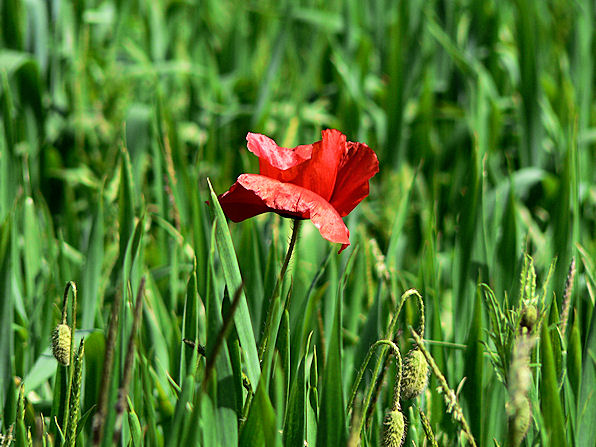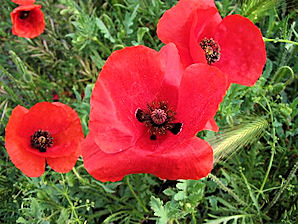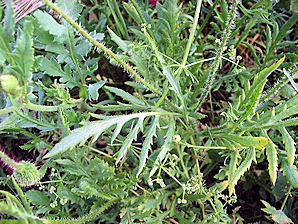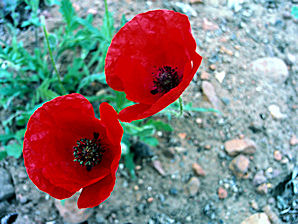Xeriscape Landscaping Plants For The Arizona Desert Environment.
Pictures, Photos, Information, Descriptions,
Images, & Reviews.
Annuals.
Shirley Poppy, Papaver rhoeas.
We Are Proud Of Our SafeSurf Rating!
Click On Any Of The Following Links By Amazon.Com
For Books, & Videos About Wildflowers Of Arizona & The Southwest USA. No Obligation!
 |
| Shirley Poppy, Papaver rhoeas. All Photos Are Courtesy Of: Wikipedia, the free encyclopedia. |
|---|
 |  |
| Flowers. Shirley Poppy, Papaver rhoea | Leaf. Shirley Poppy, Papaver rhoea |
|---|---|
 | |
| Shirley Poppy, Papaver rhoea | Shirley Poppy, Papaver rhoea |
 |
| Shirley Poppy, Papaver rhoeas. The three stages in a Common Poppy Flower: - Bud, Flower & capsule. |
|---|
Shirley Poppy.
We wish to thank Wikipedia, the free encyclopedia for some of the information on this page. We share images and information with Wikipedia. Papaver rhoea is a hardy annual. It self-sows readily and is a good choice for xeriscape gardens. Its single, red, cup-shaped flowers have a black spot in the center. The original species of this plant was introduced into our country from Russia in 1876 by William Thompson. We were concerned that some people might make opium from this poppy, so we checked it out. Papaver rhoeas has a very different alkaloidal makeup than Papaver somniferum, the opium poppy. While containing very small amounts of morphine, and/or codeine, there are not enough of these ingrediants in Papaver rhoea, for people to make opium from this poppy.
Quick Notes:
Height: Up To 1 to 2 feet tall.
Flowers: Petals 4 - 6, scarlet with a white to typically black splotch at the base, glabrous, reniform to broadly obovate, up to 2 inches long, 2 1/2 inches wide. Stamens many.
Flowering Time: April to November.
Leaves: Alternate, petiolate below, sessile above, pinnately divided. Leaves up to 2 inches long.
Found: Native to Europe but now growing throughout North America. The USDA claims Papaver rhoea is native of the USA (AK, AL, AR, CA, CT, DC, FL, IA, ID, IL, KS, KY, LA, MA, MD, ME, MI, MN, MO, MT, NC, ND, NE, NH, NJ, NM, NY, OH, OR, PA, SC, TN, TX, UT, VA, VT, WA, WI, WV). Also native to Canada (BC, MB, NB, NS, ON, QC, SK).
Hardiness: Can grow in Zones 11 & 10, but does not take heat well in those zones.
Soil pH requirements:
Sun Exposure:
Elevation: 0 - 7,000 feet. Best above 3,000 feet.
Habitat: Sandy desert soils, sunny areas (not hot), good drainage.
Miscellaneous: Said not to take heat very well. Many people claim they can't get it to grow very well. Said to take frequent waterings. We doubt that this is a good xeriscape plant, for lower elevations, even though many cities claim it is.
|
We Are Proud Of Our SafeSurf Rating!
Click On Any Of The Following Links By Amazon.Com
For Books, & Videos About Wildflowers Of Arizona & The Southwest USA. No Obligation!
| © 1966 - Present, Audrey, Eve, & George DeLange |
